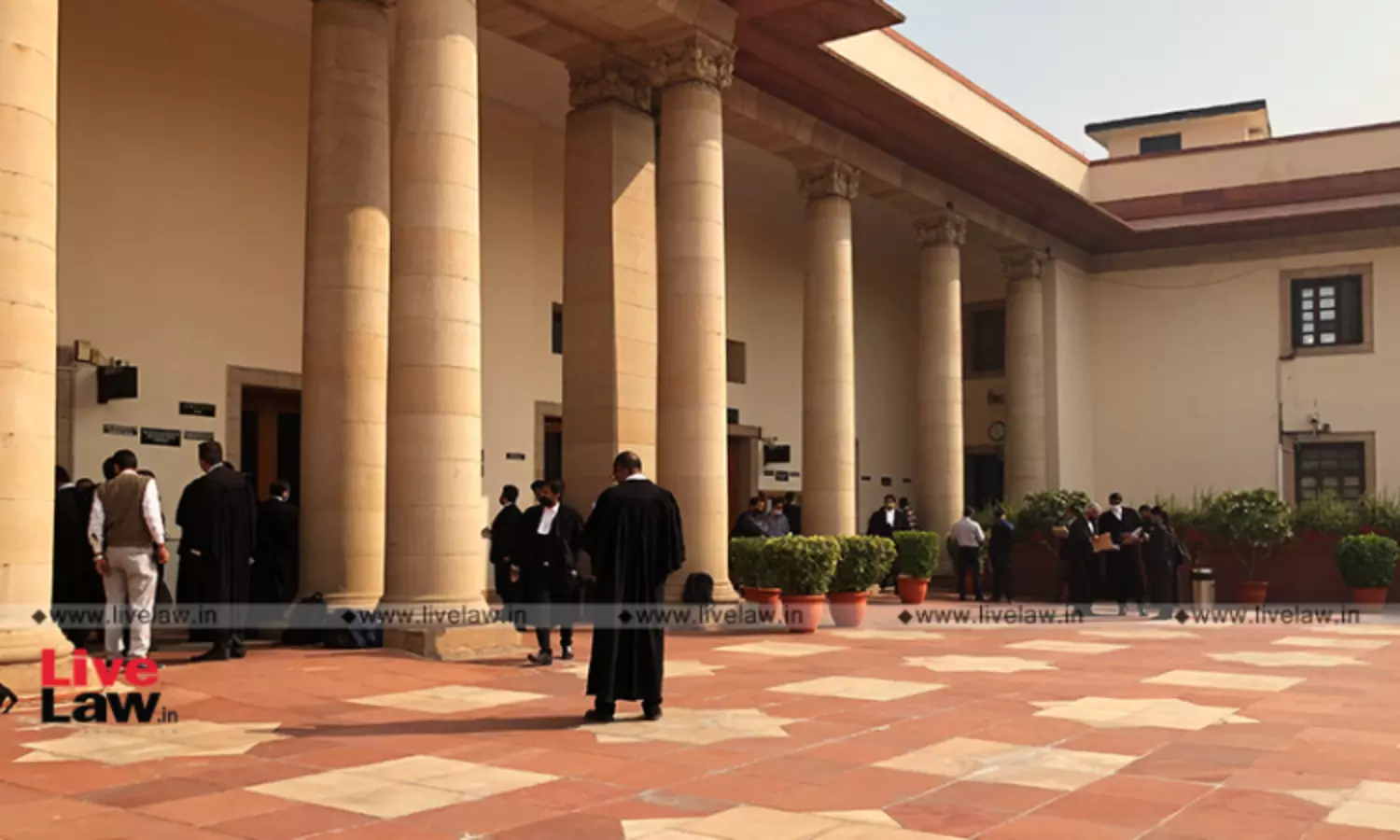Reforms In Bar Association: Case Study Of The Supreme Court Bar Association

On July 30, 2024, the Supreme Court democratized entry into the legal profession by holding the exorbitant enrolment fee charged by the State Bar Councils (“SBCs”) unconstitutional. Drawing upon the doctrine of manifest arbitrariness, SC in Gaurav Kumar vs Union of India & Ors, ruled that charging excessive fees exceeds the statutory requirements and violates fundamental...
On July 30, 2024, the Supreme Court democratized entry into the legal profession by holding the exorbitant enrolment fee charged by the State Bar Councils (“SBCs”) unconstitutional. Drawing upon the doctrine of manifest arbitrariness, SC in Gaurav Kumar vs Union of India & Ors, ruled that charging excessive fees exceeds the statutory requirements and violates fundamental rights under Articles 14 and 19 (1) (g). The Supreme Court is now again facing a similar issue in another case “Re: Strengthening and Enhancing the Institutional Strength of Bar Associations,” and is convinced that the functioning of Bar Associations in India requires structural reforms.
The issue before SC stems from a concerning incident where a junior advocate was allegedly denied access to drinking water by a senior advocate within the premises of Madras High Court. On 16th July 2024 a bench led by Justice Surya Kant impleaded the Bar Council of India (BCI), the Supreme Court Bar Association (SCBA), Supreme Court Advocates-on-Record Association (SCAORA), all the State Bar Councils, and all the High Court Bar Associations to assist the court. The SC also sought suggestions from senior advocates and advocates appearing in the matter to strengthen the bar associations across the country.
Reiterating back to the initiation of the case, the Madras High Court while deciding the issue at the Writ Petition stage dealt with various nuances of the functioning of the Madras Bar Association (MBA) including membership and admission. The High Court's findings unravel several startling facts such as the membership process of the MBA being shrouded with mystery. The findings of the Madras High Court point towards an important question – are membership of Bar Associations really important? To answer this, it is imperative to understand the importance of Bar Associations in the justice delivery system.
The Delhi High Court in P.K. Dash, Advocate vs Bar Council of Delhi has elaborated on this question. It explained that the Bar Associations occupy an essential role since these bodies are consulted before framing court procedures, important policies, and administrative decisions such as allotment of chambers, use of common spaces, commercial spaces, identification cards, earmarking of parking lots, policies for senior designation amongst others.
Bearing the functions of the Bar Associations, now it is indubitable that membership of the Bar Association plays an important role in the professional life of an advocate. Any unreasonable and discriminatory rules or eligibility criteria restricting membership to a court-annexed Bar Association will result in gatekeeping. The Madras High Court in the case of MBA has doubted whether it intended to be an “elite society of lawyers”. Further, the Supreme Court's observation is that there is a requirement for streamlining of the functioning of Bar Associations. In this relation, a case study that may be taken from the backyard of the Supreme Court is of SCBA, even the SC in Supreme Court Bar Association vs B.D. Kaushik has called for reforms in the SCBA – its membership fee, eligibility amongst others. However, one question that requires an immediate answer is – how far the SCBA's membership process democratized?
SCBA AND ITS MEMBERSHIP
As observed in B.D. Kaushik, SC reflected on the importance of SCBA being an integral part of the Supreme Court as an institution. Further, being one of the most revered Bar Association in the country and in its capacity as a court-annexed association the roles and responsibilities of SCBA are immense. At the core, the most important responsibility of SCBA is to lead an example for other Bar Associations. However, at first glance the process of obtaining membership in SCBA does not seem to be marginalized and underprivileged oriented rather it carries a tint of elitism. The procedure for obtaining membership in SCBA is filled with peculiar and redundant formalities coupled with exorbitant admission fees.
SCBA MEMBERSHIP FEE
Time and again the Chief Justice of India has expressed his concerns regarding low pay and hardship faced by the junior advocates. The Delhi High Court and the Madras High Court have similarly expressed concerns regarding the low pay standards and a need to fix the minimum stipend. However, irrespective of the plight of such persons, SCBA charges around Rs. 1000 for the admission form alone, not to forget the admission fee of Rs. 10,400 for advocates having less than 10 years of practice, coupled with a recurring cost of 15,00 per year. While the Association's charging of such an amount may not entirely be unfounded, provided it generates its majority revenue from subscription and membership fees. However, when charging such a fee is weighed with the fact that the BCI has suggested a mere stipend of Rs. 20,000 per month to junior lawyers- the admission fee seems exceedingly high. In Gaurav Kumar, the Supreme Court acknowledged the financial impediment that a young advocate may face. The Court noted the growing trends of standardized admission tests, hefty fees for such examinations, and college fees coupled with extra-curricular and co-curriculum expenses. Furthermore, the Court did not shy away from noting that the young advocates start from a position of disadvantage and earn anywhere between 10,000 to 50,000 per month. Therefore, the possibility of striking a balance must be explored by introducing steps like financial assistance on a case-to-case basis for membership fees, and the inclusion of another slab for persons who are at the nascent stage of their profession.
OTHER CONDITIONS
While an exorbitant fee is not the only leg of the exclusionary admission procedure. The candidate is required to submit two recommendation letters along with the admission form – one from the proposer and the first second who has at least 10 years of standing in SCBA. Further, it also requires the admission form to be signed by 9 other seconders having at least 5 years of standing in SCBA. On the one hand, this procedure seems to play against the young advocates coming from marginalized and underprivileged backgrounds and on the other hand it may politicize the admission process to the Association.
Even for the sake of arguments, if it is assumed that this step is required only to certify that the candidates have good professional and morals conduct - it remains a futile exercise in the light of the fact that at the time of enrollment, the candidates are required to be certified by at least two Advocates registered with the specific SBC having a prescribed period of practice. Therefore, this rule creates an artificial demarcation and creates two categories of applicants – one having an established network and connection in the profession owing to their family legacy and the ones who are new to it, without anyone in their family practicing law.
Applying the test of Gaurav Kumar, while conditions like the admission fee and recommendation of other SCBA members for admission in the association may seem neutral on the face of it, it perpetuates structural discrimination against persons from marginalized and underprivileged backgrounds. In the same breadth, it also perpetuates a cultural and systematic exclusion. While membership to any of the court-annexed associations may not be a mandatory requirement for practicing law but it puts the disadvantaged persons in a cohort of advocates having access to essential facilities like allotment of chambers, access to the library, consultation rooms, mediation rooms, access to parking space, and the fact that the membership of another association namely SCAORA is contingent on the SCBA membership. Therefore, the argument that membership in a court-annexed association becomes the core essential of practice cannot be ignored.
In conclusion, the Supreme Court's cognizance for reforming the Bar Association and the SCBA may be an opportunity for the SCBA to rethink the rules and regulations that have been there for a decade and lead from the front to democratize it and raise its standard of inclusiveness for the other Bar Associations to follow.
The author is an advocate practicing before the Supreme Court and Delhi High Court. Views Are Personal




